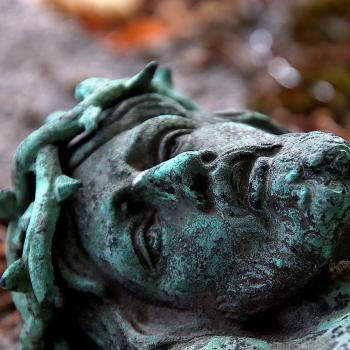
Happy Lunar New Year everyone! If you’re like a lot of Americans, you may not have much exposure to Chinese culture and yet you’ll know exactly where the nearest Chinese restaurant or buffet is. On a few occasions my friends want to go to a Chinese or pan-Asian buffet for a meal, and recently I looked around more carefully at the men and women that are working there. These days the staff at a buffet aren’t always Chinese or Asian, but they are clearly not well off. Some of them might resemble my Asian American peers who worked at their parents’ or a relatives’ restaurant out of duty and to earn a little spending cash. Many of these teens and young adults wound up going to college and landing middle class jobs. Theirs was the story of the classic model minority: started out working class, often under difficult circumstances, worked hard to make it to the middle class or higher and achieved it.
But not all Asian American young adults have that story. In fact the Census Bureau points out that 12% of Asian America is in poverty, that’s almost 2 million people (see page 14 of this link to the Census brief; btw the rate increases to almost 17% if we use what’s called the Supplemental Poverty Measure which tries to create a more accurate economic estimate of real poverty). This rate is actually higher than the white non-Hispanic population (10% or about 20 million), and as you might guess, it’s not easy to find the poor in America and convince them to fill out a survey when they’ve been working their fingers to the bone or stressed out for any number of reasons. So our estimates are always conservative. For a number of Asian Americans then, some of whom might be serving you when you’re in a buffet might actually be in poverty.
When ethnic immigrant minority groups are “low in resources” (i.e. in poverty) one solution they have is to share their resources together. They form geographically tight communities which we call ethnic enclaves. Chinatown is the most well known among the Asian American enclaves, and in places like southern California Koreatown, Little Tokyo, and Little Saigon also emerge as examples of this pattern. Near where I live (by Texas standards) there’s a massive Chinatown in Houston and a sizeable Korean enclave in Dallas.
 But as far as the Chinatowns go, they are under hard times so to speak. As China’s economy has been improving, working class Chinese are sometimes migrating back for even better opportunities than serving food here in the US.
But as far as the Chinatowns go, they are under hard times so to speak. As China’s economy has been improving, working class Chinese are sometimes migrating back for even better opportunities than serving food here in the US.
But as it turns out, Asian Americans are also dispersing into suburbia as well.
While we need to analyze data on this, it made me wonder how the working class and those Asians who are in poverty manage without being in close proximity to one another. Are they living near other poor Americans regardless of color? Are they hidden by sharing a large home with a wealthy relative or two?
I wonder about this too in part because of the recent news about Danny Chen, the 19-year-old Chinese American soldier who shot and killed himself in Afghanistan after a reported excessive and race-based hazing he underwent there. Reading Jennifer Gonnerman’s sketch of his home life, we learn that Danny grew up in New York’s Chinatown. To make ends meet, he and his parents shared the same bedroom. We don’t hear much about these Asian Americans, the ones who don’t go to Harvard or Berkeley—the non-model minorities.

Moreover, we don’t know much about whether or how religion is important in their lives. In my review of the research on Asian American Christianity, I found sociologist Kenneth Guest’s book that illuminated the religious world of New York’s Chinatown. As with many ethnic immigrant organizations, religious groups whether Buddhist, Christian or Fuzhounese in Chinatown are often supportive communities. They help maintain social ties across nations for these immigrants, they provide access to healthcare and ESL courses and the like.
But I wonder again about Danny Chen. I wonder whether he and his family had a religious ethnic community to find support. And for Danny while he was growing up, did participating in these groups serve to help him through struggles or did it only amplify it as was found in a study I discussed in a previous post ?
And if the Chinatowns in our nation’s largest cities are dwindling, does this create isolation for those Asian Americans who once found refuge in affordable housing in these enclaves? How will they find support in a time of need and crisis? Next time you visit a buffet, consider what life might be like for the men and women who refill your cup and take the plates from your table while you’re going for round two or dessert. Who helps sustain them?















